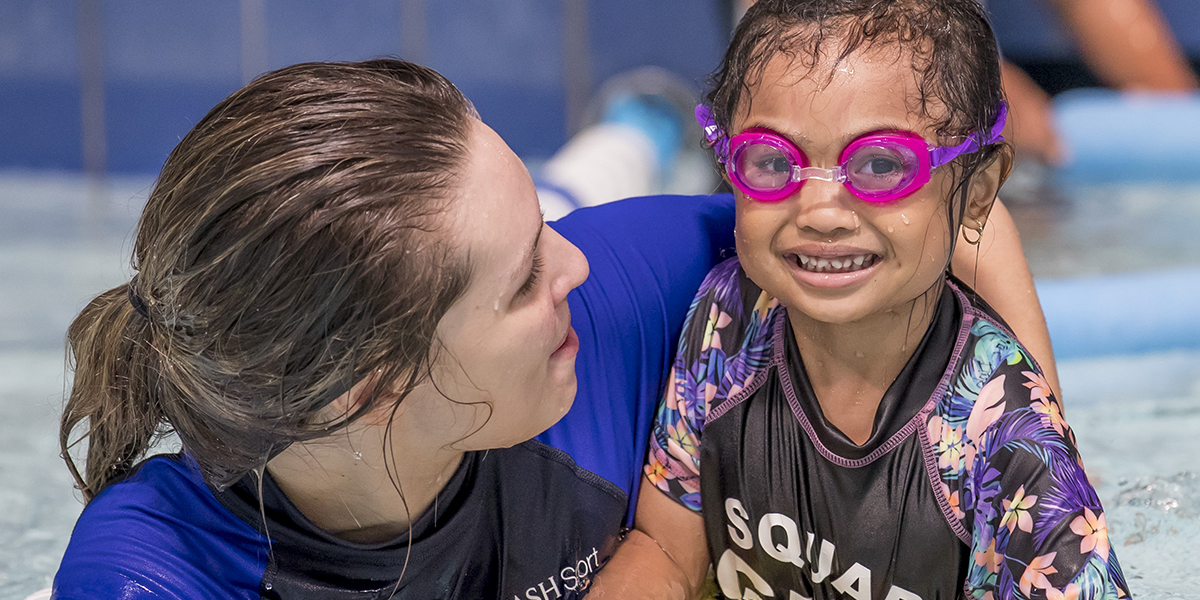25% Dramatic Fall in Swimming Lessons Sparks Fears for Summer
MEDIA RELEASE
2nd October 2020

New data released by Royal Life Saving and the Aquatic Recreation and Swim School industry shows a 25% significant fall in swimming lesson enrolments, with the greatest impact shown in metropolitan areas and among children aged 7 to 12 years with a fall of 40% in some areas.
Children’s swimming and water safety skills are critical to drowning prevention and a lifelong love of water. Australia’s reputation in this area is world leading, as are our aquatic centres and swim schools.
Royal Life Saving is urging parents to assess their children’s swimming skills. If they can’t reach the National Swimming and Water Safety Benchmarks for their age, they should enrol them in lessons prior to summer.
Royal Life Saving CEO, Justin Scarr, said “The fall in swimming lesson enrolments is so dramatic that Royal Life Saving is concerned that COVID-19 may create a generation of non-swimmers, who will never be safe around water. Parents should be reminded that learning to swim is not only a partial vaccine against drowning, it boosts a lifelong love of swimming for fun, health and fitness.”
Royal Life Saving analysed swim school enrolments provided by partners YMCA, Belgravia Leisure, BlueFit Group, Aquatic Recreation Institute – NSW and the Australian Swimming Coaches and Teachers Association (ASCTA).
The research shows that September 2020 enrolments (compared with September 2019) have:
- Fallen by 25% on average across Australia (excluding Victoria)
- Fallen by 8% in children 0 to 3 years and 22% in children 4 to 6 years
- Fallen by 29% in children 7 to 9 years, and 41% in children 10 to 12 years
- Impacts are greater in metropolitan areas, compared with regional areas
- The biggest decrease in enrolments recorded are in metropolitan Sydney (41%)
- The data excludes Victoria as most pools have been closed throughout September
The sharpest decline in enrolments is in school aged children, which have fallen between 29% to 41%. Royal Life Saving believes that this age is exactly the wrong time to be quitting lessons.
Research shows that cost, distance, parental awareness, and negative experiences are all barriers to swimming lessons. COVID-19 has placed financial pressures on families and raised safety concerns.
Brendon Ward, ASCTA CEO, said “Swim schools have been profoundly impacted by closures through winter; they now have comprehensive COVID-19 plans in place to do everything possible to ensure the safety and wellbeing of their community. Professional swimming lessons provide essential skills that last a lifetime and enable people to enjoy the water safely.”
Melinda Crole, CEO YMCA Australia, which runs aquatic facilities and swim schools across Australia, said “The social and mental health benefits of a swim at the local swimming pool is often overlooked. Aquatic centres provide a safe, social place to exercise, practise vital swimming skills, relax and feel a sense of connection to community. All these things are vital during a COVID impacted summer.”
Justin Scarr, CEO Royal Life Saving, said “If a 7, 8 or 9-year-old child can’t yet swim 50m and tread water for 2 minutes then they should be in swimming and water safety lessons. Cost can be a barrier, and we encourage parents to investigate State Government sport vouchers, planning ahead to enrol in the subsidised holiday programs and asking grandparents to gift lessons for birthdays or Christmas.”
Key facts
The National Swimming and Water Safety Benchmarks for children aged 6 and12 years are:
- Every Australian at the age of 6 years should be able to swim continuously for at least 5 metres, submerge, move through an obstacle, and identify people and actions to help in an emergency;
- Every Australian at the age of 12 years should be able to at least swim continuously for 50 metres and tread water for 2 minutes, and rescue a person using a non-swimming rescue technique with non-rigid aids and perform a survival sequence wearing clothing.
The Aquatic Recreation and Swim School industry is estimated to:
- Include more than 1077 aquatics centres and 1176 swim schools
- Employ more than 67,000 people
- Provide an important source of jobs for women and young people (aged 18 to 24 years)
- Provide lessons and squad training to more than 1.5 million people
- Cater for more than 106 million pool visits annually
The social, economic, health and wellbeing impacts are measured into the billions by various studies.
Further information
There are aquatic centres and swim schools in almost every community across Australia. Local pool and swim school managers, instructors and councils have a shared commitment to ensuring children have access to swimming lessons. They will be able to localise this issue.
About Royal Life Saving Society – Australia
Royal Life Saving Society – Australia is a not-for-profit organisation working to reduce drowning and increase water safety skills through learn to swim and lifesaving programs. It promotes safe participation in swimming and other aquatic activities for all ages, abilities and communities. Its vision is a nation free from drowning.
About Aquatic Recreation and Swim School Industry
Key industry groups and aquatic recreation facility managers have been meeting weekly since the COVID-19 Pandemic was declared and public health regulations required facilities to close. This group has provided advice to industry, advocated various issues including impacts on workforce, business sustainability, Job Keeper, community impacts and re-opening plans. This group includes: Aquatic Recreation Victoria, Aquatic Recreation Institute – NSW, YMCA, Belgravia Leisure, Aligned Leisure, BlueFit Group and Royal Life Saving.
Aquatics Recreation Victoria is working with the Victorian Government and Lifesaving Victoria for a staged reopening of the Victorian Aquatic and Recreation industry that supports the safety of workers, volunteers and participants , the economic viability of the industry and enhancement of the health and wellbeing of communities in Victoria.
